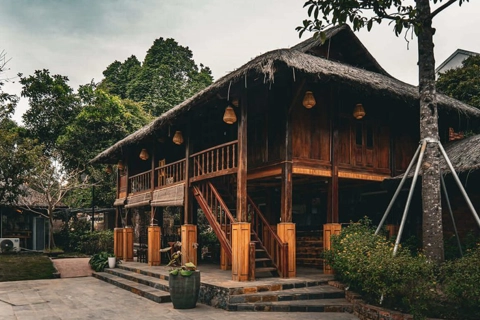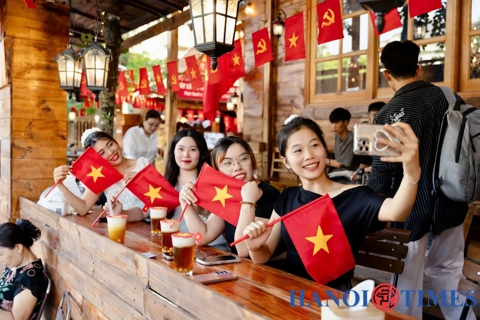Travel
Vietnamese tourism striving for openness
Jan 19, 2018 / 09:04 PM
2017 was the year for the Vietnamese tourism industry to make its mark with unprecedented growth figures. However, to sustainably develop and become a key economic sector as planned, the sector still has to surmount a myriad green challenges.
Unprecedented growth
In 2017, tourism development was determined as a key economic sector for the first time in Resolution No.08 of the Poliburo, with many focal and breakthrough solutions. In the same year, the amended Law on Tourism was officially approved by the National Assembly. In particular, the smokeless industry has achieved unprecedented growth rates. For the whole year of 2017, Vietnam welcomed approximately 13 million foreign visitors and almost 74 million domestic visitors. The total revenue from tourism reached US$23 billion, accounting for about 7.5% of the GDP. This was a record growth in the total number of foreign visitors.
At the same time, the Vietnamese tourism industry has been collecting prestigious titles from global tourism awards in the droves, securing the 6th highest tourism growth in the world and topping tourism growth in Asia. Millions from around the world have admired the beauty of Ninh Binh, Ha Long, and Quang Binh in the Hollywood blockbuster “Kong: Skull Island.” Images from Vietnam have been popping up around the globe via big media channels, such as CNN, Lonely Planet, Trip Advisor, and a number of other international newspapers. Nguyen Van Tuan, Director General of Vietnam National Administration of Tourism, said: “In the 57 years since its formation, 2017 was a special year for Vietnamese tourism, posting achievements that it may not be able to repeat ever again.”
Many difficulties
Though we can be optimistic about the success, according to tourism experts’ evaluation, these results are still modest compared to the potential and advantages against other countries in the region. Luong Hoai Nam, Deputy General Director of Vietstar Airlines, said that according to Travel and Tourism Competitiveness Index Report 2017 of World Economic Forum (WEF), Vietnam ranked 34th among 136 competing countries in natural resources in tourism. The country was 30th in cultural resources and MICE tourism, and 37th in human resources in tourism.
However, regarding overall competitiveness, the Vietnamese tourism industry is still weak, ranking only 67th of the 136 rankers on WEF’s list. Vietnam’s advantages in resources and human resources in tourism are constrained and even disabled by many “bottlenecks,” such as international openness (rank 73), attention and preference to tourism development (rank 101).
Nguyen Dinh Cung, President of Central Institute for Economic Management, said that the Vietnamese tourism sector still has some limitations, such as standing low on the Government’s agenda and budget allocation preferences, as well as restricted openness in comparison with other countries in the region. Additionally, the country is held back by poor tourism infrastructure.
According to the Government’s targets for 2018, the Vietnamese tourism industry needs to welcome at least 15-17 million foreign visitors. However, to maintain the growth rate of approximately 60% enjoyed in 2016 and 2017 will be a challenge. Thus, experts widely agree that to accomplish the task, the tourism industry needs contributions and practical measures from related Ministries, sectors, and local authorities of all levels—not to mention the society. Only this way can the “bottlenecks” be removed and the tourism environment be gradually improved in order to turn Vietnam into a truly safe, friendly, and attractive destination for global tourists.
In 2017, tourism development was determined as a key economic sector for the first time in Resolution No.08 of the Poliburo, with many focal and breakthrough solutions. In the same year, the amended Law on Tourism was officially approved by the National Assembly. In particular, the smokeless industry has achieved unprecedented growth rates. For the whole year of 2017, Vietnam welcomed approximately 13 million foreign visitors and almost 74 million domestic visitors. The total revenue from tourism reached US$23 billion, accounting for about 7.5% of the GDP. This was a record growth in the total number of foreign visitors.

Foreign arrivals to Hanoi.
|
Many difficulties
Though we can be optimistic about the success, according to tourism experts’ evaluation, these results are still modest compared to the potential and advantages against other countries in the region. Luong Hoai Nam, Deputy General Director of Vietstar Airlines, said that according to Travel and Tourism Competitiveness Index Report 2017 of World Economic Forum (WEF), Vietnam ranked 34th among 136 competing countries in natural resources in tourism. The country was 30th in cultural resources and MICE tourism, and 37th in human resources in tourism.
However, regarding overall competitiveness, the Vietnamese tourism industry is still weak, ranking only 67th of the 136 rankers on WEF’s list. Vietnam’s advantages in resources and human resources in tourism are constrained and even disabled by many “bottlenecks,” such as international openness (rank 73), attention and preference to tourism development (rank 101).
Nguyen Dinh Cung, President of Central Institute for Economic Management, said that the Vietnamese tourism sector still has some limitations, such as standing low on the Government’s agenda and budget allocation preferences, as well as restricted openness in comparison with other countries in the region. Additionally, the country is held back by poor tourism infrastructure.
According to the Government’s targets for 2018, the Vietnamese tourism industry needs to welcome at least 15-17 million foreign visitors. However, to maintain the growth rate of approximately 60% enjoyed in 2016 and 2017 will be a challenge. Thus, experts widely agree that to accomplish the task, the tourism industry needs contributions and practical measures from related Ministries, sectors, and local authorities of all levels—not to mention the society. Only this way can the “bottlenecks” be removed and the tourism environment be gradually improved in order to turn Vietnam into a truly safe, friendly, and attractive destination for global tourists.








